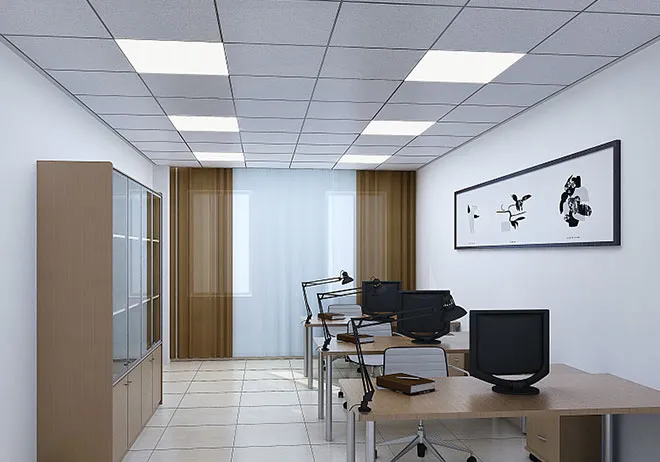Nov . 10, 2024 06:27 Back to list
Acoustic Ceiling Grid Systems for Enhanced Sound Control in Interiors
Exploring the Benefits of Acoustical Ceiling Grid Systems
In modern architecture and interior design, achieving optimal acoustics in a space is crucial. Whether in offices, schools, hospitals, or public spaces, the sound environment plays a significant role in the comfort and effectiveness of these areas. One effective solution for managing sound is the acoustical ceiling grid system. This article delves into what constitutes an acoustical ceiling grid, its benefits, applications, and considerations for installation.
Understanding Acoustical Ceiling Grids
An acoustical ceiling grid is typically composed of a suspended grid framework that supports sound-absorbing tiles. These systems are primarily used to improve the acoustic performance of a room by reducing ambient noise and echo. Made from various materials, including mineral fiber, fiberglass, and foam, the tiles used in these grids are specifically designed to absorb sound waves, minimizing reflections and enhancing clarity.
The grid system itself is constructed of metal (often aluminum or steel) and is suspended from the overhead structure of a building. This creates a void between the ceiling tiles and the actual ceiling, allowing sound waves to enter the porous tiles and be absorbed rather than reflected back into the room.
Benefits of Acoustical Ceiling Grids
1. Noise Reduction One of the primary benefits of acoustical ceiling grids is their ability to control noise levels within a space. By absorbing sound, these systems significantly reduce the transmission of conversations and other disturbing noises, which is particularly beneficial in settings like open-plan offices or classrooms.
2. Aesthetic Versatility Acoustical ceiling tiles come in various designs, colors, and textures, which means they can complement a wide range of interior styles. Architects and designers can select tiles that not only improve acoustics but also enhance the aesthetic appeal of the space.
3. Easy Maintenance and Accessibility The modular nature of ceiling grids allows for easy access to the ceiling cavity. This is crucial for maintenance of HVAC, electrical systems, and other utilities that might be installed overhead. If a tile needs to be replaced or repaired, it can be done quickly without disrupting the entire ceiling.
4. Energy Efficiency Many acoustical ceiling systems are designed to improve energy efficiency. By helping to regulate temperature and sound, they can reduce the need for additional heating or cooling solutions in a space, leading to lower energy bills.
acoustical ceiling grid

5. Enhanced Focus and Productivity In environments like workplaces or educational institutions, a quieter atmosphere can lead to improved focus and productivity. Employees and students can concentrate better when they are not distracted by excessive noise, ultimately boosting overall performance.
Applications of Acoustical Ceiling Grids
Acoustical ceiling grids are widely used in various sectors
- Commercial Spaces Open-plan offices benefit immensely from these systems as they help reduce noise distractions and enhance privacy. - Educational Institutions In schools and universities, controlling sound levels is vital for creating conducive learning environments. - Healthcare Facilities Hospitals and clinics use acoustical ceilings to mitigate noise, promoting healing and privacy for patients. - Entertainment Venues Theaters and concert halls often incorporate advanced acoustical designs, including ceiling grids, to enhance sound quality and audience experience.
Considerations for Installation
When planning to install an acoustical ceiling grid, several factors should be considered
- Room Size and Layout The size and shape of the room will influence the type and amount of acoustical treatment required. - Tile Material Different materials provide varying levels of sound absorption, so selecting the right type is essential based on the specific acoustic needs. - Installation Height The height at which the grid is installed can affect sound management; higher ceilings might require different solutions compared to standard height installations.
Conclusion
In conclusion, acoustical ceiling grid systems are invaluable components in the design of functional and aesthetically pleasing spaces. With their remarkable benefits in noise reduction, aesthetic versatility, and energy efficiency, they play a critical role in modern architecture. Whether in a bustling corporate office or a quiet classroom, installing an acoustical ceiling grid can make a significant difference in the overall comfort and productivity of the environment. As sound continues to be a critical element in any space, these systems will undoubtedly remain a popular choice for architects and designers alike.
-
Quality Ceiling Trap Doors & Access Panels | Easy & Secure AccessNewsAug.30,2025
-
Durable Ceiling T Grid Systems | Easy InstallationNewsAug.29,2025
-
PVC Gypsum Ceiling: Durable, Laminated Tiles for Modern SpacesNewsAug.28,2025
-
Pvc Gypsum Ceiling Is DurableNewsAug.21,2025
-
Mineral Fiber Board Is DurableNewsAug.21,2025
-
Ceiling Tile Clip Reusable DesignNewsAug.21,2025







